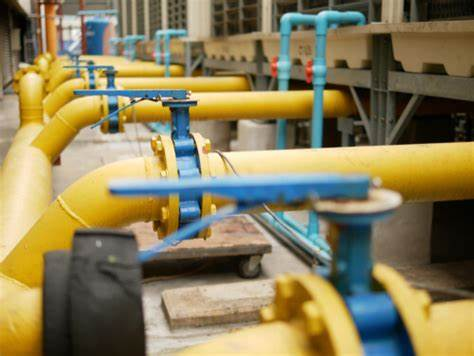Ball valves have a quarter-turn operation and are available in a variety of styles. They come with a spherical ball with a hole. When the valve is open, the ball aligns with the flow of the media. When closed, the spherical plug rotates 90 degrees to stop the flow.
This type of valve can be used for shutoff applications, such as chemical processes, and is capable of handling dust and slurries. There are many types of ball valves available in the market.
Floating ball valves are the most common type of ball valve. These valves are the most common because they allow for a large degree of freedom. The ball is pushed against the downstream seat by upstream pressure.
Other types of ball valves include trunnion ball valve, full port ball valve, standard port ball valve, v port ball valve, etc. If you want to know more about types of ball valves, continue reading this article.
Table of Contents
ToggleWhat Is a Ball Valve?
A ball valve is a type of industrial valve that works by using a hollow ball to control the flow. A ball valve’s working mechanism is similar to a standard rotary valve: the stem rotates to open or close the bore. When the stem stops moving, the valve closes, and the ball disc turns to face the flow of media.
Depending on the valve type, it can also be manually operated by handwheels. A ball valve can be powered by a solenoid or pneumatic actuator, or it can be manually operated using a handwheel.
A ball valve has five parts, including a rotary ball and a stem. The ball is manually or electrically operated. It requires a 90-degree turn of the handle to open or close. During its open position, it can’t move. Its housing keeps the ball in place. Similarly, a rotary ball valve can be manually or electrically operated.
Ball valves are generally classified by their shape and materials. The first two components are the ball and the body. The latter carries the pressure end loads, and the former carries the flow end loads. A ball valve is bidirectional if its seats are spring-loaded into it.
Types of Ball Valves
Here are the different types of ball valves you can buy for various industrial applications.
- Full Port Ball Valve
A full port ball valve comes with an oversized ball with a hole in between. With this valve, the flow is unrestricted. Its small size and lightweight make it an economical choice in many applications, especially those without tight flow requirements. Full port ball valves allow unrestricted flow and are larger, making them the most common choice for these applications. They can also be used for applications where the rate of flow is not critical.
- Standard Port Ball Valve
A Standard Port Ball Valve is an ideal choice for a wide range of applications. The standard port ball valve is the cheapest of the three types. These valves are available in a variety of sizes and have the same pressure rating as full port valves. Standard port valves are also available in larger sizes. Among the major differences between a standard port and a full port valve is the size. While these two ports may seem similar, the differences between them affect performance and wear.
- V Port Ball Valve
A V Port Ball Valve is a regulating device that allows unobstructed flow while minimizing pressure drop. Because of their high Cv value, this type of valve can achieve similar flow rates as larger control valves while using much smaller actuators. This feature helps them function effectively regardless of pressure. This makes them an ideal choice for applications requiring high flow rates. In addition, they are more cost-effective than other valve types. The most significant advantage of a v port ball valve is its flow coefficient.
- Manually Operated Ball Valve
There are several advantages of using a manual ball valve. First, it can isolate the process fluid. The construction prevents fluid leakage. However, manual valves tend to have a tendency towear out the diaphragm, which means maintenance is necessary. Second, they are not suitable for high-temperature fluids. As a result, they are typically used on liquid systems.
- Trunnion Ball Valve
A Trunnion Ball Valve is an ideal choice for on-off applications, where the valve’s high sealing performance is needed. A three-piece design reduces the size of the valve actuator and the overall cost of the valve actuation package. The valve’s unique design also reduces seat wear and offers self-cleaning capabilities. Trunnion ball valves are suitable for applications involving both viscous media and fibers and are available in a wide range of sizes and pressure classes.










